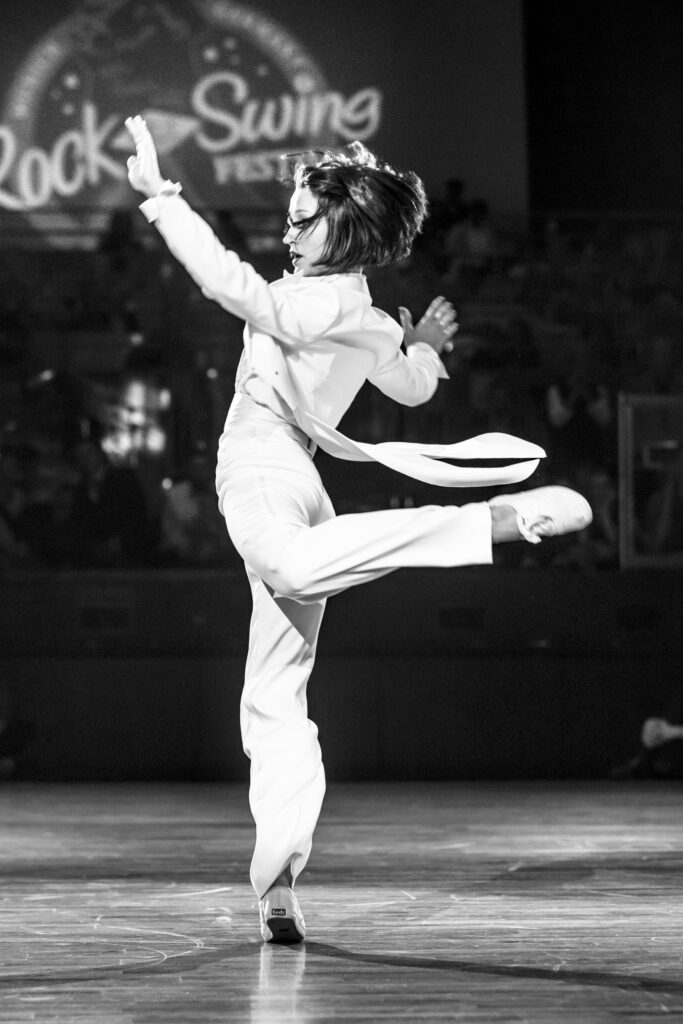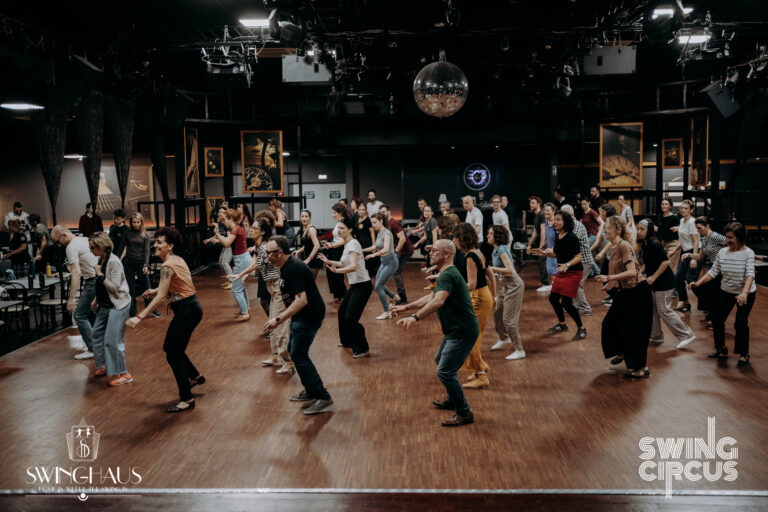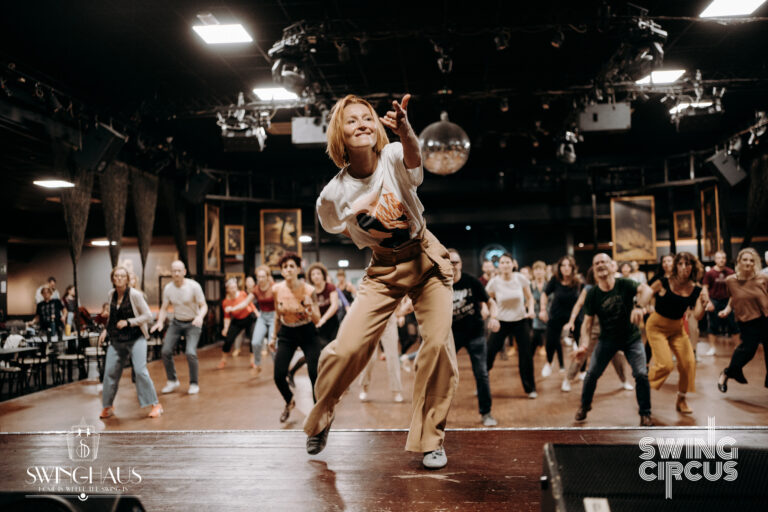If you are a beginner, to improve your turns in solo jazz, first you need to focus on the basic techniques of turns. Preparation and spotting are the 2 most important elements of turning. In this blog you will discover the essential tips for improving your turns.
If it doesn’t look easy it is that we have not tried hard enough yet
Fred Astaire
Preparation in solo jazz dance turns
Preparation is the key to stability and direction, hence balance and coordination in solo jazz dance turns. In preparation you decided on which leg you turn and which direction is your turn (front left/right or back left/right). It’s important to know where your weight is at every and any stage. The worst case scenario is when you have weight in between your legs and you have no clue where you go.
How to prepare for a turn?
Preparation depends on the type of turn and the step you are coming from into the turn. There are simple rotations, spins and rhythm turns. Start working on your turns in solo jazz dance with simple rotation. Simple rotation is essentially just going somewhere via a rotation.
- Spin is a fast turn.
- Rhythm Turn is something related to jazz dance and tap specifically. It is when you create a rhythm in your feet when rotating.
- The turns can be on one leg and on both legs.
Preparation as well depends on the direction of your turn, amplitude and speed.
Normally, all the standard turns are done with the weight on / over the balls of your feet. For variation and eccentric style we can turn on the heel, toe, or other parts of the leg and even body. As for the basic turn technique, start with focusing on weight distribution on the balls of your feet.
Why do we fall when turning and how to keep control?
We fall from the turn often because of 2 issues that are somewhat related:
- the weight is to much on the heel, hence your shoulder fall back and you fall back
- the shoulders tend to move back hence you go on your heels and you fall back
Make sure to keep your weight over the balls of your feet and turn on the ball of your feet.
Where do I start the turn from?
The wheel of the typical standard turn are your shoulders. Not your nose, not you legs or arms, but your shoulders. When we go into the turn we do not sporadically throw ourself to one side. We push from the floor with our feet and create direction with our shoulder. Try moving your right shoulder slightly to the right and see how your whole body want to turn.
There are 2 categories of turns: with disassociation of the body parts, a sort of delay or echo effect, and when we turn as a block.
- one is when you start the turn in one point of the body and then the whole body comes later into the rotation
- the other is when the whole body goes into the rotation at the same time, so the shoulder – hip -knee – toes look the same direction and rotate at the same time.
Start to practice the second type of the turn for solo jazz dance. This way you will learn the basic technique from where you then can start practicing other more advanced turns. In the beginning all we want to achieve is to get controlled and smooth turns.

Spotting when doing a turn
Spotting is another key to success for good turns in solo jazz dance. You will hear the word “spot” in a dance class on turns nearly hundred times.
Remember the two simple rules:
- My eyes and nose leave into the turn the last, but return from the turn first. The key idea is to keep an eye on something to know where are you going into the turn from and where are you arriving after the turn. The the eyes need to focus right after the rotation, before you put the leg on the ground to finish the turn.
- My neck and head leave a separate life from the body. You do not turn your head together with the body. The neck and head stays spotting and only then goes into turn.
Why do I feel dizzy when turning and how to prevent it?
Spotting will help you to stop feeling dizzy. Dizziness comes because you are not spotting, which is to say that your eyes are not focused and your vision field is blurry. If you go into the rotation and not spot (which is to say your head will turn at the same time as the body), you will feel dizzy pretty quickly.
Landing from a turn
In vernacular solo jazz dance styles it is acceptable to land with a slight soft bounce down. Make sure you do not collapse into it though, but still have control over weight distribution. In jazz dance styles like solo jazz dance, the lindy (hop), swing, 20s Charleston and so on, you do not need to push up when turning, you can keep low and parallel to the ground with bend knees.
One of the biggest inspirations in jazz dancing regarding turns is Nicholas Brothers. Their furious, energetic style of rhythm turns and spins is very inspiring for dancers of all styles.
Conclusion
Practice few minutes at a time and take breaks. Feeling dizzy will definitely not help. Spend time in preparation to make sure you spot and have weight distribution according to how you want to turn and you know your direction.
You can check out this video, it’s a partial recording of my class on turn technique in jazz dance:
You can study turn techniques with Secrets of Solo online dance classes. It is a very convenient way to improve the turns in solo jazz dance. You can study in your own pace in front of the mirror, filming yourself. Most importantly you do not need to be worried or feel embarrassed in a class with other people. You can take the online class as a first step to establish your basics and then feel more comfortable and confident in a live class.
(perfect for any level)
Jazz Steps IV: Signature Breaks chapter
- Lesson 28: Lock Turns 9
- Tips: How not to get dizzy in a turn 2
- Lesson 31: Half Break & Lock Turn 1
- Lesson 32: Lock Turn Break
Variation Lab. vol II: Fall Off The Log course
- Variation 12: Syncopated Turn 2
- Variation 13: Kick Turn
- Variation 14: Back Turn 1
Secrets of Improvisation course
(perfect for any level, especially if you are working on improvising)
- “How to step?” Rotation 2
- Chapter IV: Form & Rotation 1 (check all classes in this chapter)
- Fall of The Log. “Rotation” tool 2
This article is a developed answer to a request on Ksenia’s Quora acccount,




